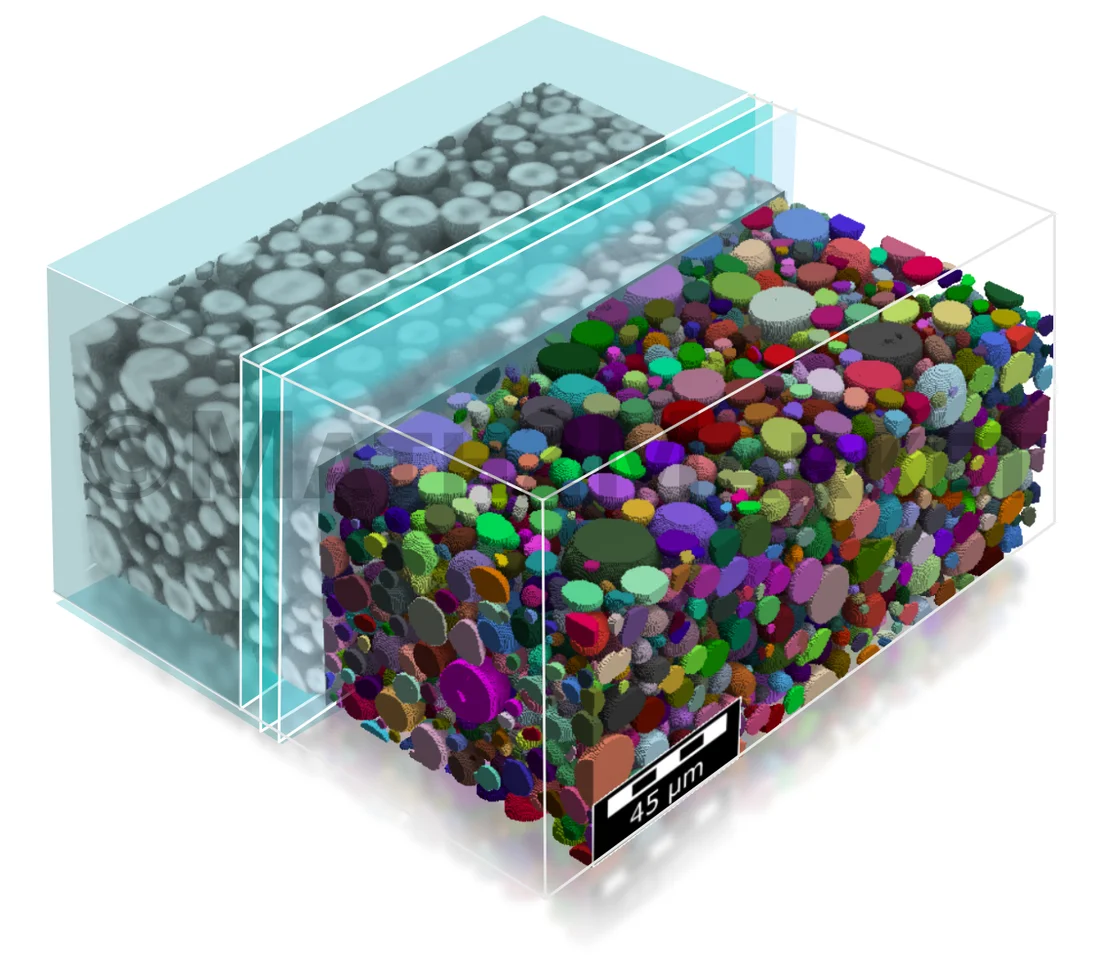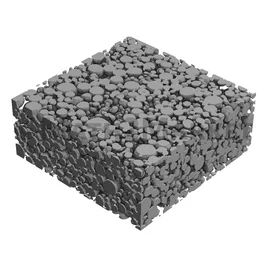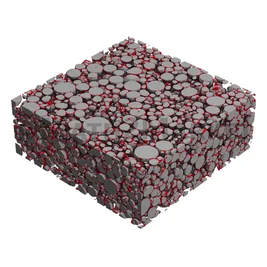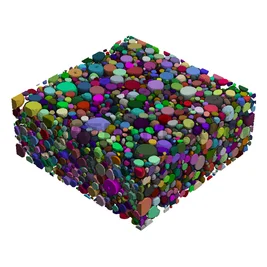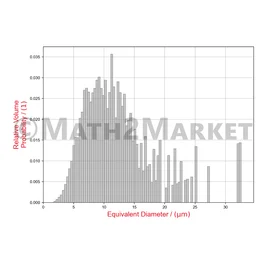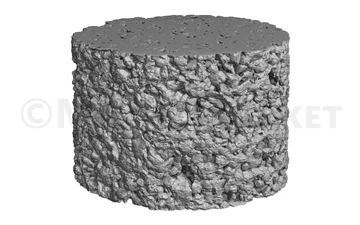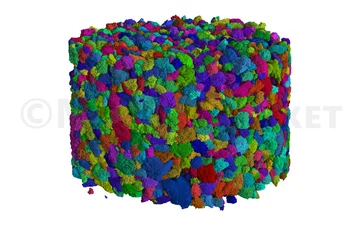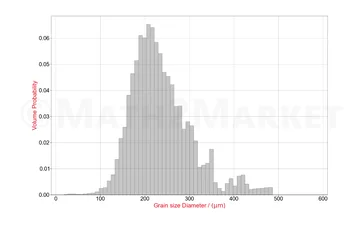Identification of Grains and Binder
GrainFind
The GrainFind module provides access to statistical information of µCT-scanned granular structures, as e.g., in battery electrodes. The Identify Grains-algorithm computes an individual best-fit shape for each grain in the structure. This way, it recognizes individual grains and its spatial orientation. The acquired information can be loaded into GrainGeo with just one click to generate a representation of the microstructure. This workflow enables to model and vary statistical Digital Twins of the scanned microstructure.
In µCT-scans binder and grains often have the same gray values and are thus indistinguishable from each other. For this reason, the "Identify Binder (AI)" identification module was developed. This module uses Artificial Intelligence (AI) to separate grains and binders in the solid phase based on their different shapes.
The workflow using GrainFind-AI and GrainGeo enables simulations on the structure which would not be possible otherwise. Such as, for example, simulations of mechanical deformations, or electrode charging simulations - both depending on the distribution of the binder and sometimes even on the orientation of the grains of the active material.
3D models of a material are obtained after importing and segmenting µ-CT scans or FIB-SEM scans of this material. GrainFind offers several features to analyze this structure:
- Identify and analyze individual grains:
grain volume, surface, surface-to-volume ratio, sphericity (shape), orientation, etc. - Compute grain diameter distribution
- Identify binder in granular structures using AI
Grain identification
The grain identification process uses a specialized watershed algorithm to find individual grains, and subsequently it uses a grain reconnection to reconnect over-segmented grains. Grains on the domain boundary may optionally be removed to prevent a systematic bias in the statistics of the identified grains. Finally, a grain-shape analysis fits ellipsoids, boxes, or short fibers onto the found grains, and hence creates an analytic model for the grains.
Statistical data of identified grains
Once the grains are identified as single objects, many possibilities for post processing are available, such as histograms for the diameters, volumes or surfaces of the grains.
The diameter distributions, the sphericity and the other calculated parameters can also be visualized in 3D. It is also possible to sort the grains by their diameters, volumes or any other of the calculated parameters.
You can even visualize each of the grains individually and for example only consider the largest grains. This allows for instance to assign different stiffnesses to the small grains, as to the intermediate-sized grains, and to the large grains.
The calculated grain orientations can later also be considered in conductivity studies or during mechanical simulations. Furthermore, the results of GrainFind be used in GrainGeo to re-built this specific microstructure and make alterations to it.
Binder identification (AI)
The identification of binder is based on neural networks trained to differentiate between grains and binder. Two neural networks are already available in GrainFind:
- Identification of binder in graphite anodes: Trained neural network to label binder domain in graphite-like structures with flake-like grains.
- Identification of binder in NMC cathodes: Trained neural network to label the binder phase in NMC-like structures with sphere-like grains.
The grain identification process in GrainFind happens completely automatically. The complexity of the algorithm is hidden “under the hood”. Nevertheless, the technical details of the algorithm are described in our User Guide, to ensure maximum transparency for the User.
Examples of Applications
- Battery materials: to get statistics about the active material particles and access the binder distribution in electrodes.
- Digital Rock Physics: to obtain information and statistics about individual grains with the corresponding digital grain size distribution to gain a deeper understanding of the rock microstructure
- Filtration: to characterize binder and filtration particles
- Composites: to detect and characterize unwanted granular particles in composite materials
- Quality control: to detect and characterize binder and unwanted granular particles in composite materials

GrainFind
| Image Processing and Image Analysis | ImportGeo-Vol | ||||
| Material Analysis | GeoDict-AI | FiberFind | |||
| Modeling & Design | GrainGeo | ||||
| Simulation & Prediction | BatteryDict | DiffuDict | FlowDict | ConductoDict | ElastoDict |
Suitable modules depend on the concrete application.
